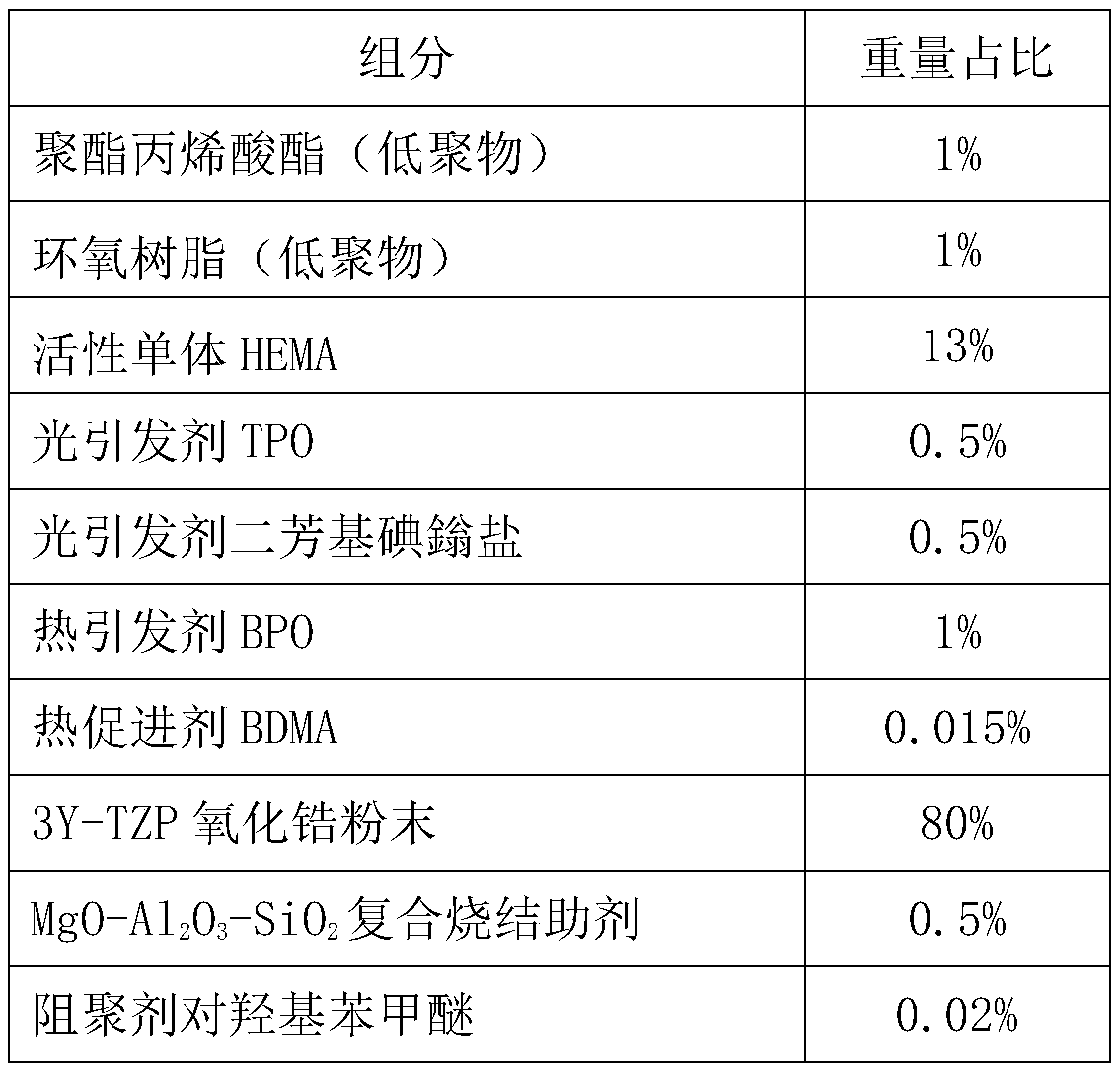Dual-cured ceramic material for additive manufacturing and preparation method and application of dual-cured ceramic material
A ceramic material and additive manufacturing technology, applied in the field of additive manufacturing materials, which can solve the problems of difficult-to-solidify ceramic materials, such as difficulty in printing
- Summary
- Abstract
- Description
- Claims
- Application Information
AI Technical Summary
Problems solved by technology
Method used
Image
Examples
experiment example 1
[0043] Experimental Example 1 used the components in weight proportion shown in Table 1.
[0044] Table 1 Components used in Experimental Example 1
[0045]
[0046]
[0047] The specific preparation method of Experimental Example 1 is as follows.
[0048] Put urethane acrylate, epoxy resin, and active monomer HEMA (hydroxyethyl methacrylate) into a beaker; use an electric stirrer to disperse, set the speed at 200r / min, and stir for 20min to obtain a uniformly mixed solvent.
[0049] Add dispersant polyethylene glycol, photoinitiator TPO, photoinitiator diaryliodonium salt, thermal initiator BPO, thermal accelerator BDMA, polymerization inhibitor p-hydroxyanisole, Drewplus disinfectant to the solvent at room temperature Foaming agent, leveling agent BYK-333, MgO-Al 2 o 3 -SiO2 Composite sintering aids were dispersed for 30 minutes with an electric stirrer at a speed of 200 r / min to obtain a resin-based solution. This step should be performed in the dark.
[0050] Pu...
experiment example 2
[0054] Experimental Example 2 used the components in weight proportion shown in Table 2.
[0055] Table 2 Components used in Experimental Example 2
[0056]
[0057]
[0058] The specific preparation method of Experimental Example 2 is the same as that of Experimental Example 1.
experiment example 3
[0060] Experimental Example 3 used the components in weight proportion shown in Table 3.
[0061] Table 3 Components used in Experimental Example 3
[0062] Element Weight ratio urethane acrylate 1% active monomer TEGDMA 30% Photoinitiator 819 1% Thermal curing initiator BPO 5% Thermal Accelerator N,N-Dimethylaniline 1% Leveling agent BYK-358 0.1% CaO-Al 2 o 3 -SiO 2 Composite sintering aid
[0063] The specific preparation method of Experimental Example 3 is the same as that of Experimental Example 1.
PUM
 Login to View More
Login to View More Abstract
Description
Claims
Application Information
 Login to View More
Login to View More - R&D
- Intellectual Property
- Life Sciences
- Materials
- Tech Scout
- Unparalleled Data Quality
- Higher Quality Content
- 60% Fewer Hallucinations
Browse by: Latest US Patents, China's latest patents, Technical Efficacy Thesaurus, Application Domain, Technology Topic, Popular Technical Reports.
© 2025 PatSnap. All rights reserved.Legal|Privacy policy|Modern Slavery Act Transparency Statement|Sitemap|About US| Contact US: help@patsnap.com



